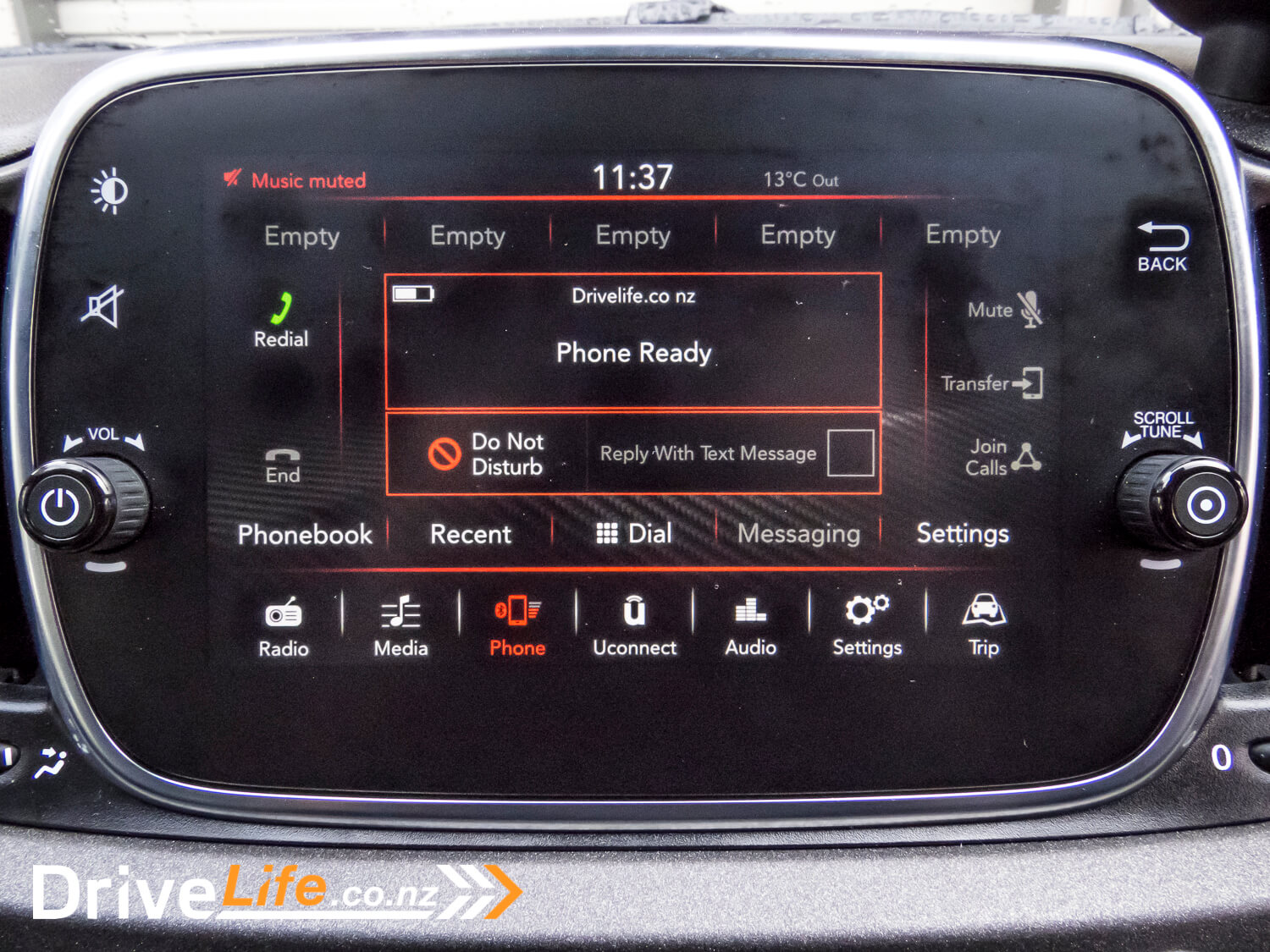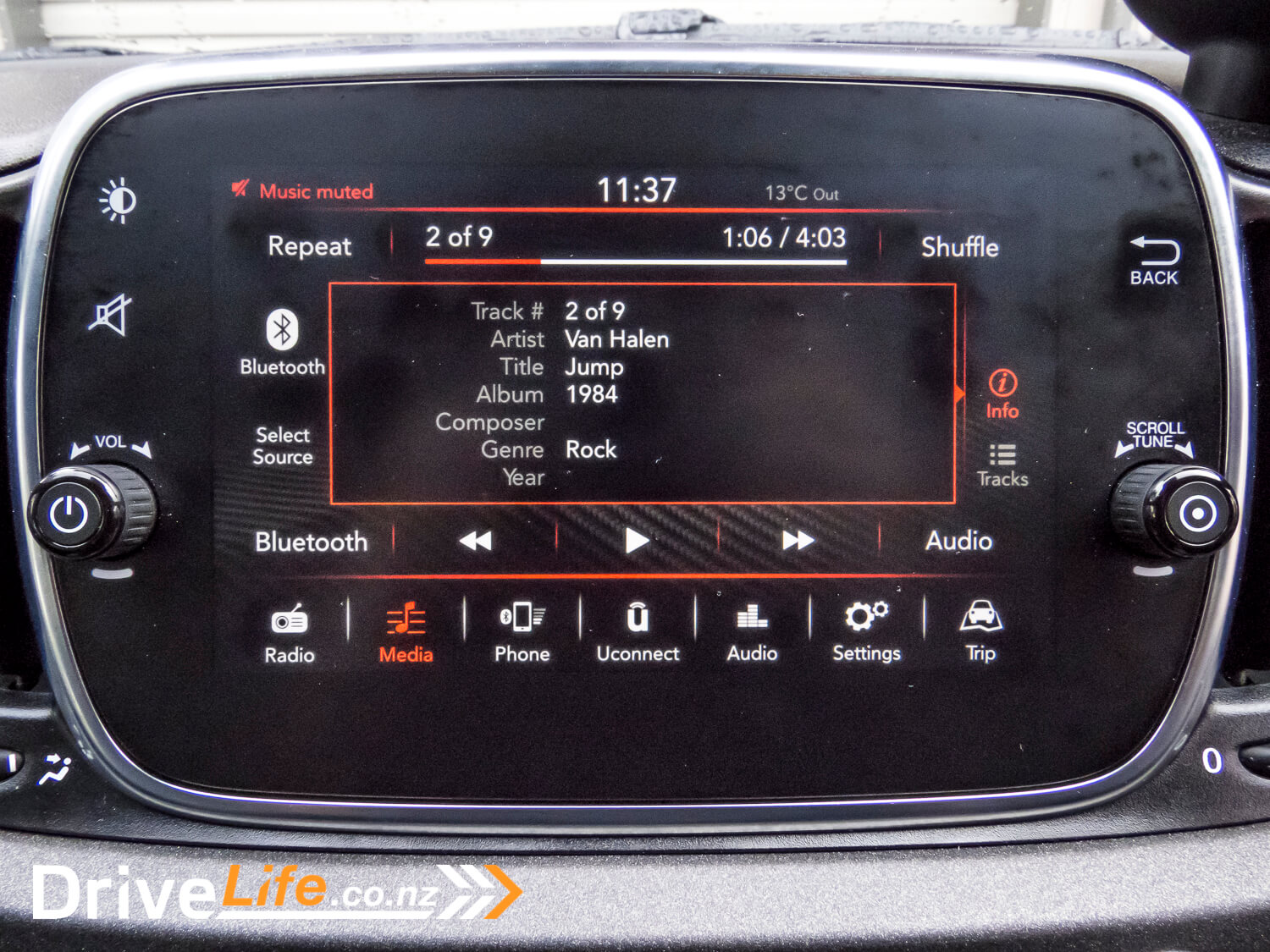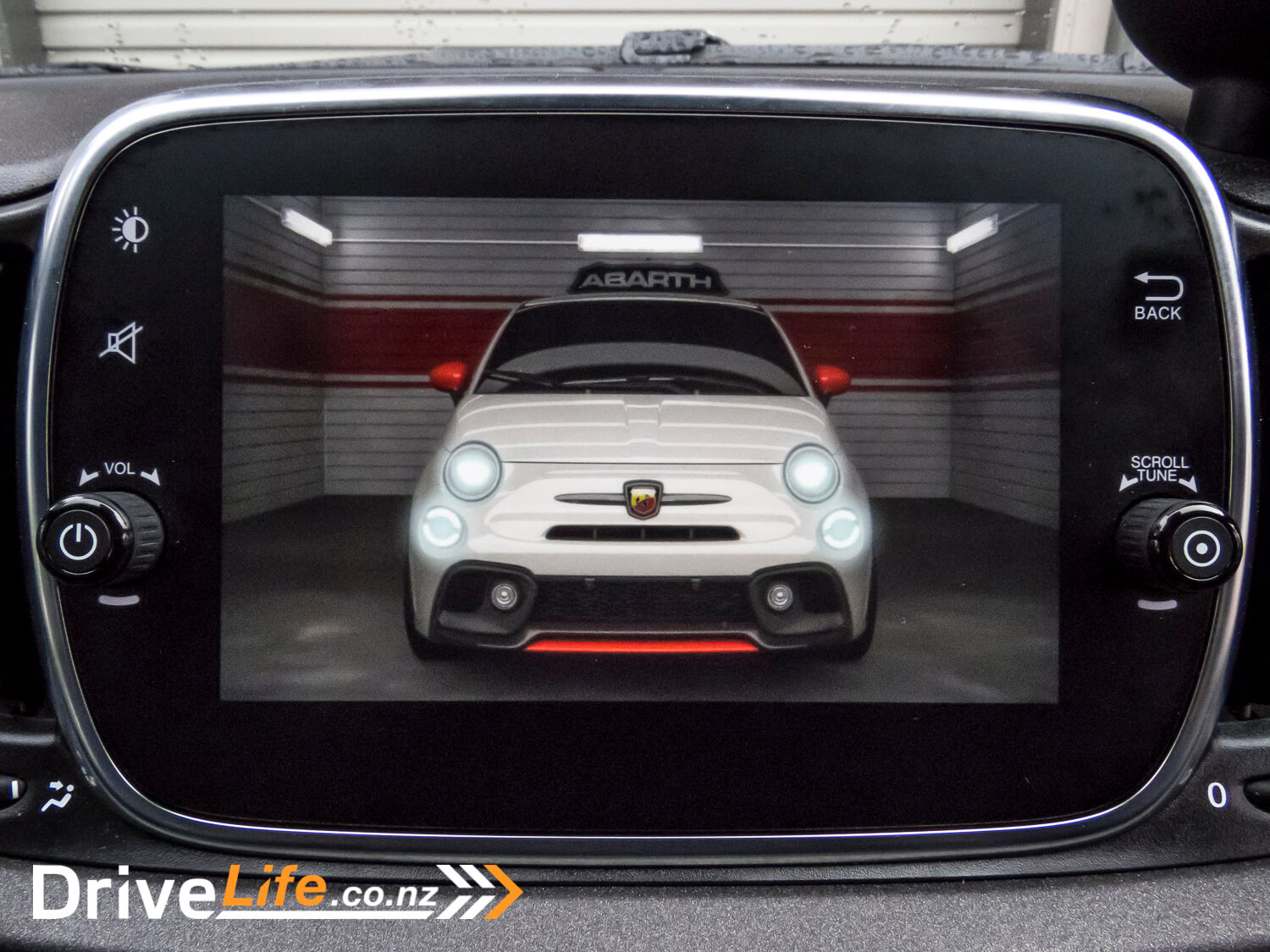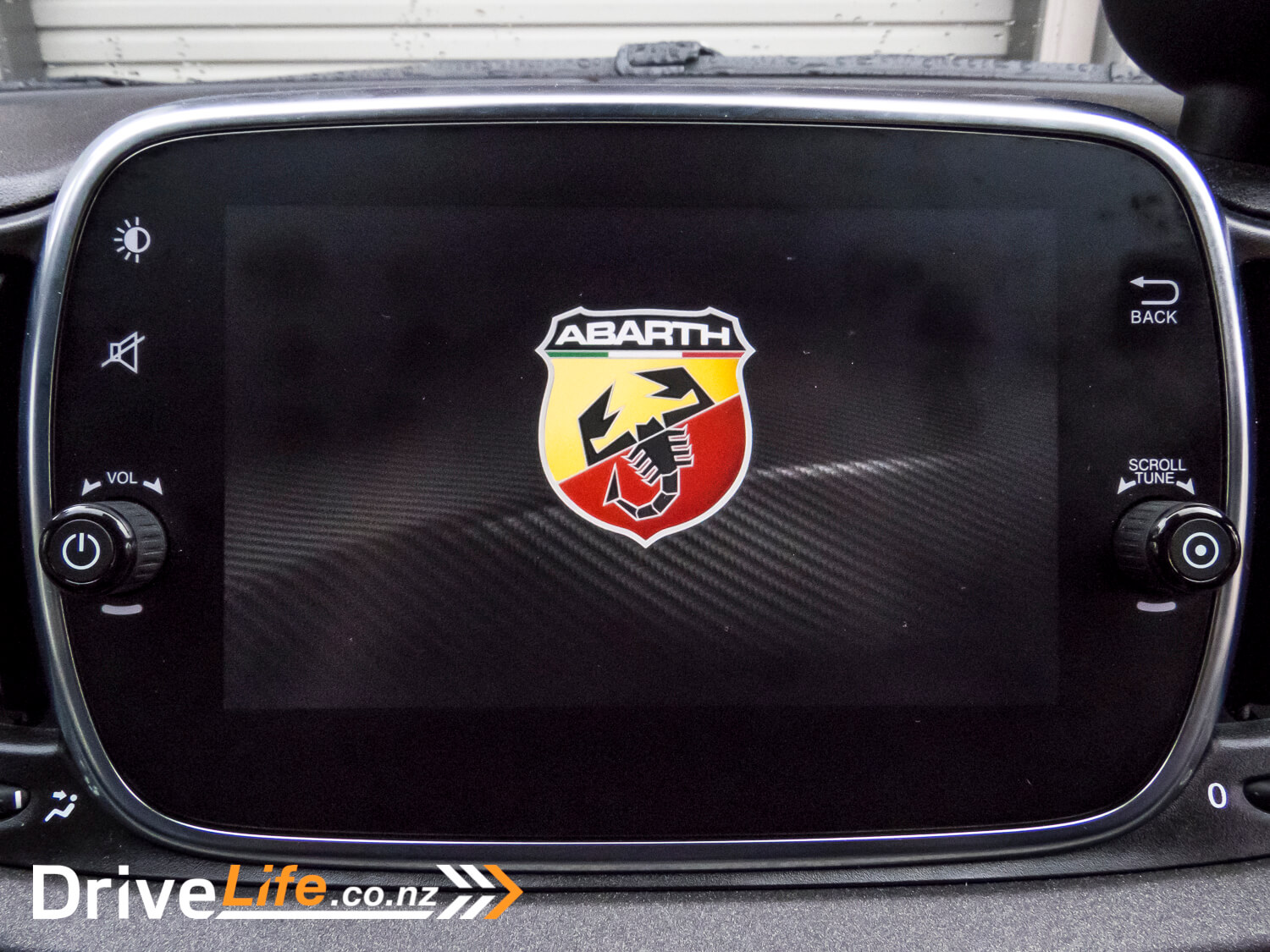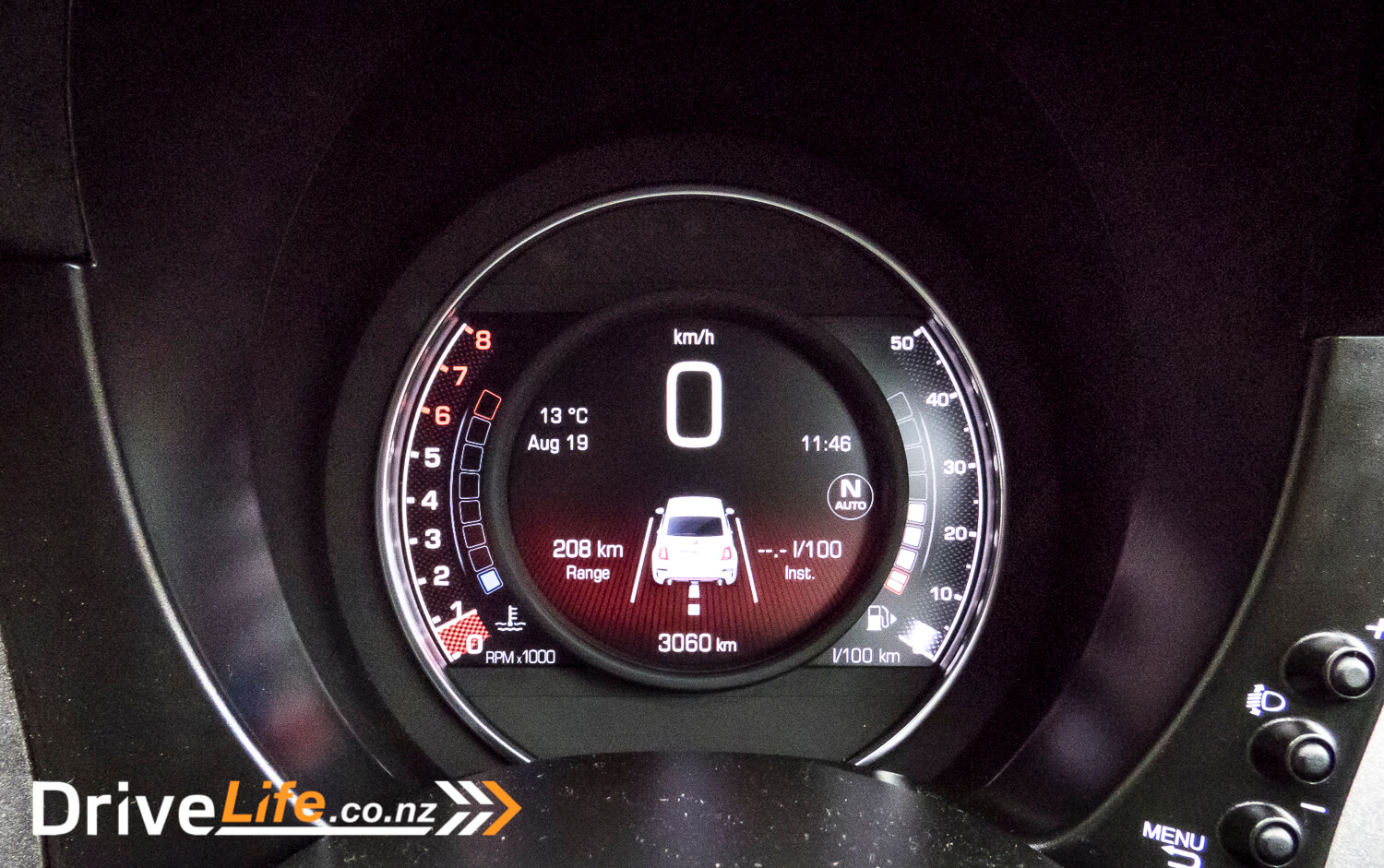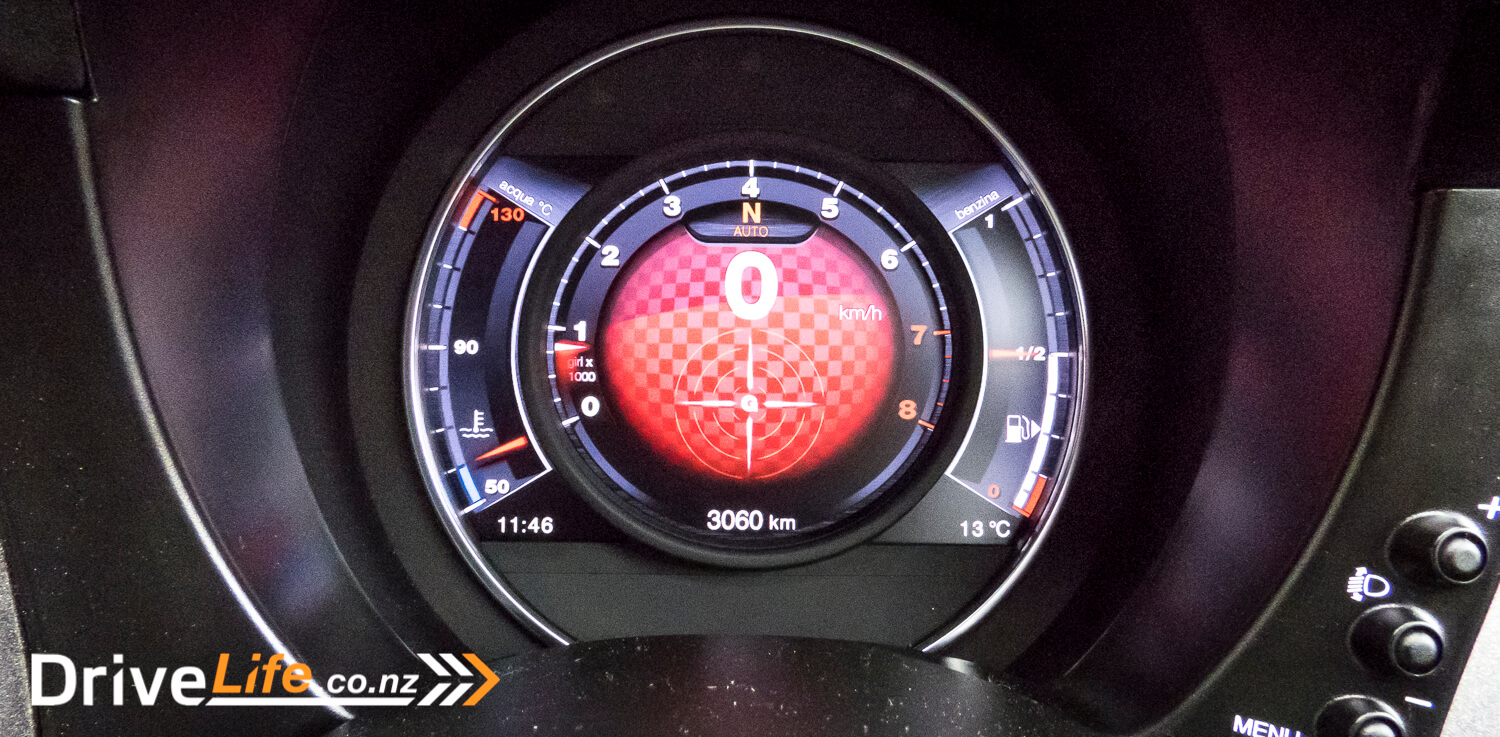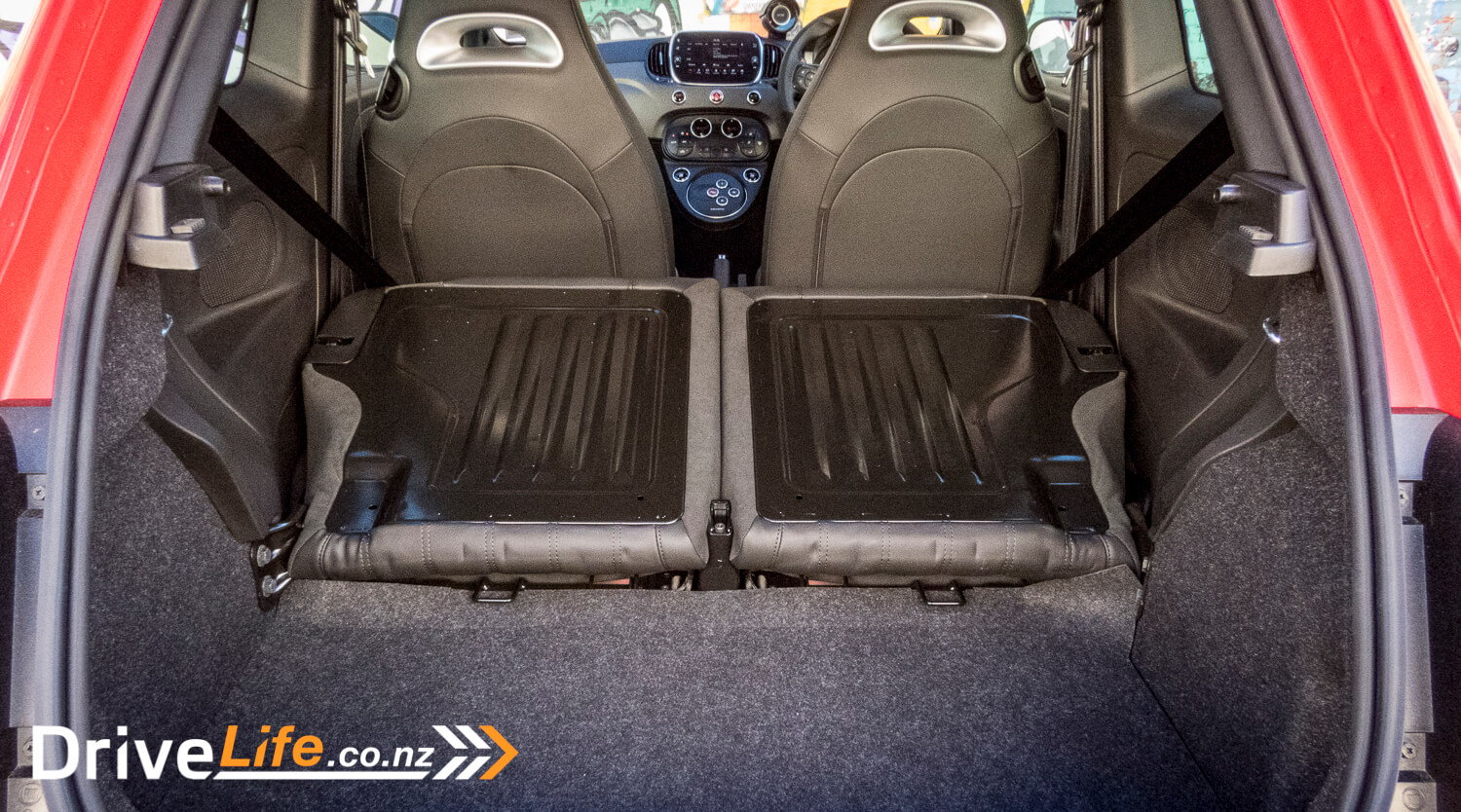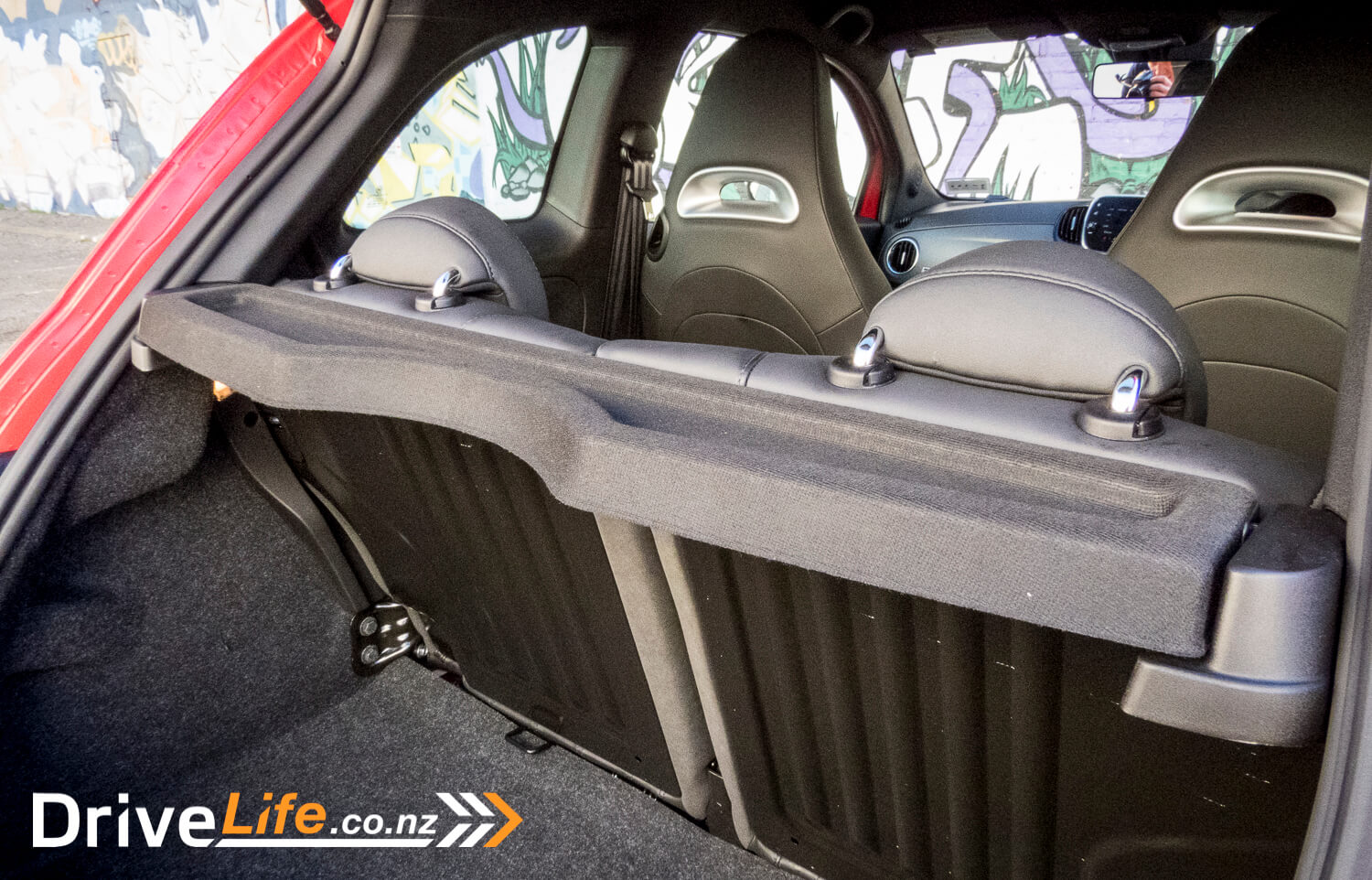Abarth is an historic gem of the automotive world. The distinctive Scorpion badge carries with it a rich history in racing and the sight of one brought with it a serious reputation.
Though, if you’re an outsider, Abarth mightn’t be a familiar name and nobody could blame you. The brand was only revitalised by Fiat in 2007 after a lengthy hiatus.
For a brief lesson, the history of Abarth is long and accomplished. Abarth was a racing and road car manufacturer, founded in Italy in 1949. During their heydays, they were facing-off against Porsche and Ferrari, and winning too. In 1971, they were bought by Fiat and used for fronting up their racing divisions, until the name was mothballed in 1981.
Since the second coming of the brand, Abarth has spent their time hotting-up humble Fiats, transforming them into performance machines.
We managed to get our hands on an Abarth 595 Competizione, which is based on the Fiat 500. Let’s see how it goes.

What’s In The 2020 Abarth Range?
Although the Abarth 595 Competizione shares a body with the Fiat 500, it’s best treated as its own entity. It is an Abarth, after all.
Technically, the 595 Competizione is the only specification. However, there are four flavours of 595 Competizione, depending on the gearbox and body configurations. You can have your 595 as a Hatchback or with a convertible roof, and with either a manual transmission or Fiat’s Duologic automatic transmission.
Under the bonnet is a 1.4L turbocharged 4-cylinder petrol engine producing 132kW of power and 250Nm of Torque.
The cheapest of the range is the 595 Hatch, with a manual transmission, which starts at $39,990. Opt for the 595 Convertible with an automatic, and you’ll pay $45,490. Our test vehicle is the automatic hatchback variant of the 595 Competizione, which starts from $42,490.
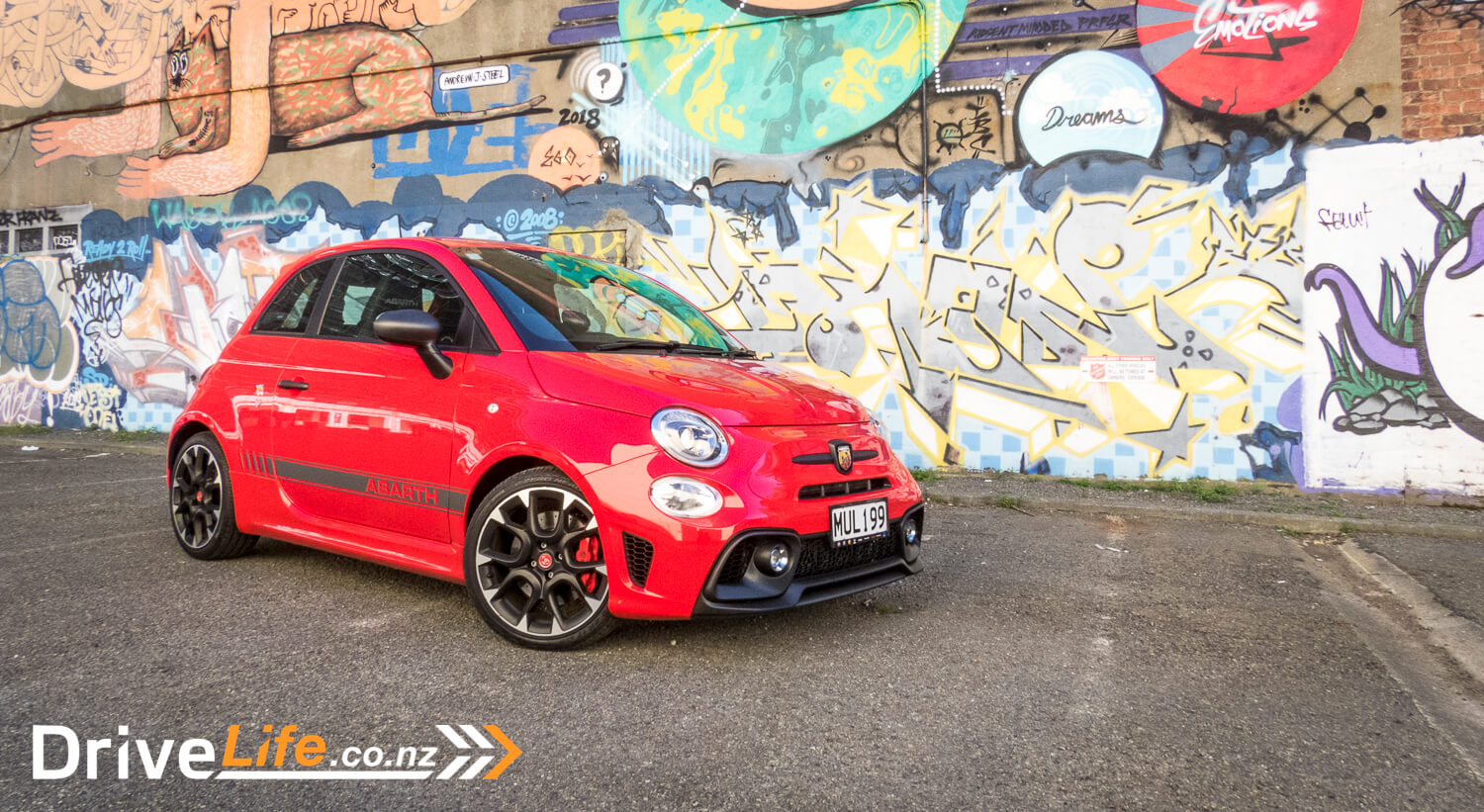
The 595 offers a number of features as standard, including; 7’’ touchscreen infotainment, Apple Carplay and Android Auto, Bluetooth, voice control, digital dash, leather sports front seats, sports steering wheel, aluminium sports pedals, rear parking sensors and daytime running lights.
Of course, the 595 Competizione wouldn’t be a proper Abarth without a comprehensive list of performance equipment as standard. The 595 is equipped with 17’’ alloys wrapped in Pirelli P-Zero tyres, Koni front and rear adaptive suspension, a bi-modal Monza exhaust, Brembo brakes, BMC air filter, and a Garrett Turbocharger.
The 595 range offers an extensive colour palette, with nine colours available. Two these colours options are the particularly shouty Modena Yellow and Abarth Red, the latter of which is the colour of our test vehicle. I think they look the business.
You can read more about the Abarth range on the Fiat New Zealand website.
First Impressions Of The 2020 Abarth 595 Competizione
When you think about it, the 595 Competizione is a blend of the extreme and mundane. At the core, you have a cutesy Fiat 500, which is essentially a fashion statement, two-door economy hatch.
The Abarth 595 Competizione is the 500 that threw away the Gucci, put on a leather jacket, some knuckle-dusters, and started collecting punk rock records.
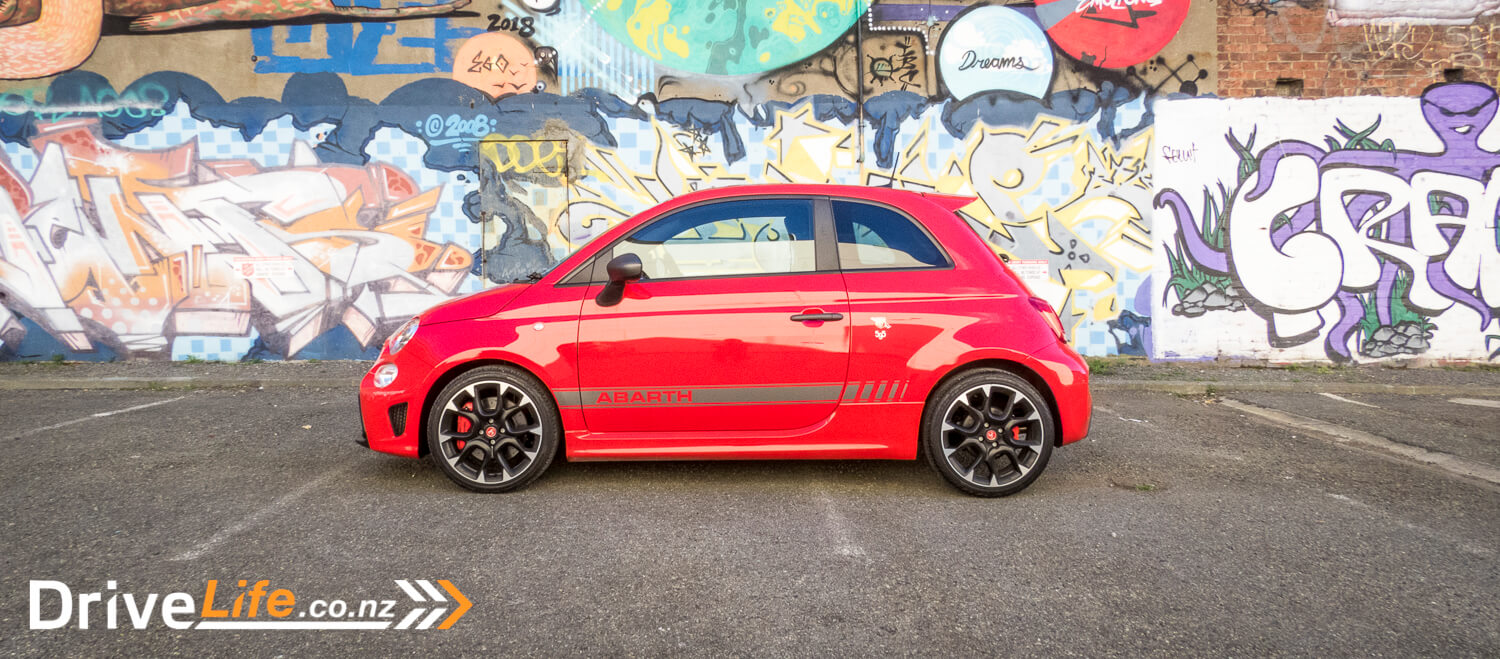
The 595 gets sharp-looking 17’’ alloys, with red Brembo brakes shining through underneath. There’s an aggressive front bumper with the ‘Abarth’ etched into the lower grille. The daytime running lights silhouette the zeros from the Fiat 500 logo. At the back, there’s a massive roof spoiler and quad tips from the Monza exhaust. Topping it all off are several Abarth scorpion badges, decals and its shouty Abarth Red paint.
It looks like it gate-crashed a Ferrari party at Modena, nabbing all the canapés it could.
I was never sold on the 500, but I am sold on the 595. Be sure to get a Red one. Yellow is cool too.
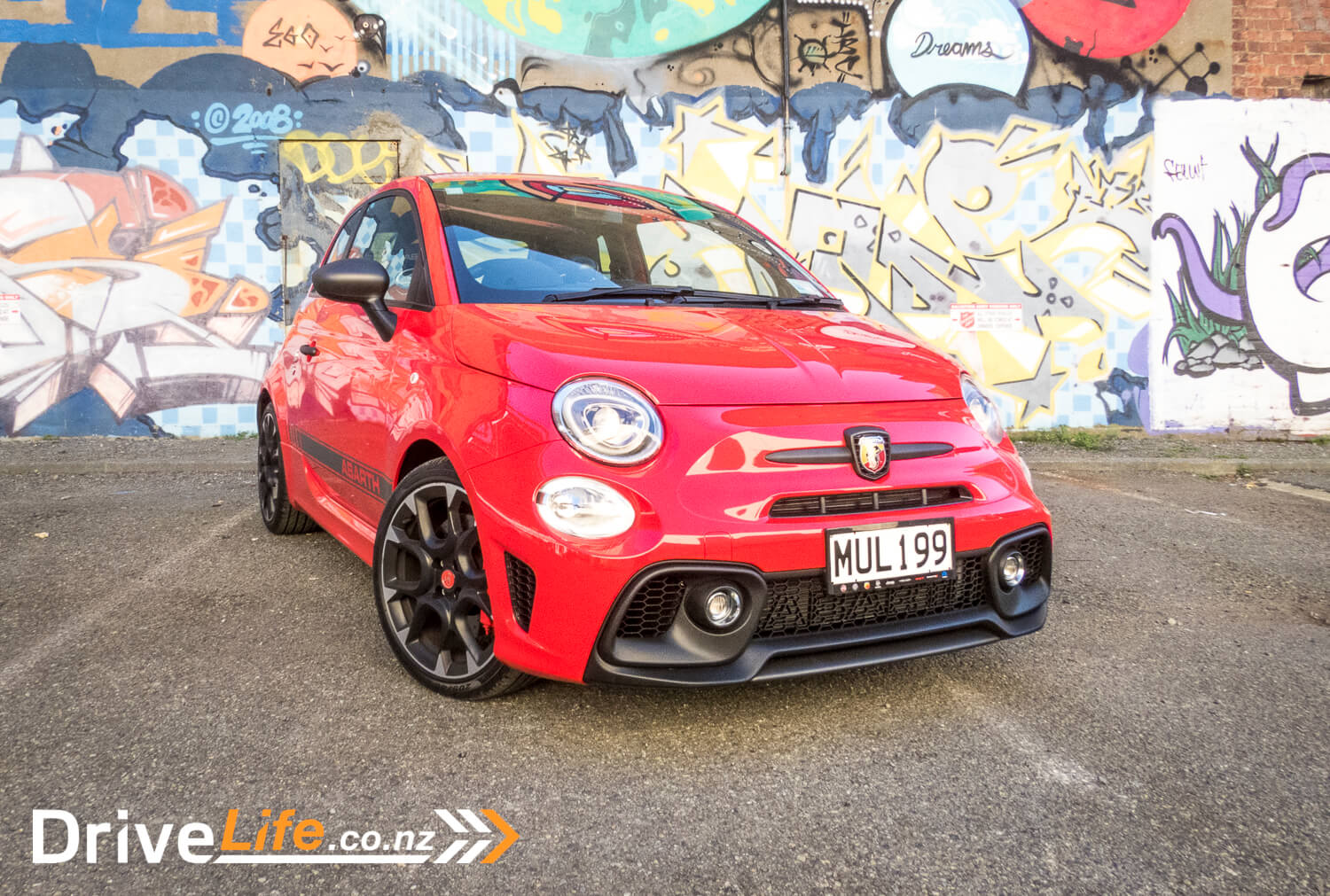
What’s The Interior Like On A 2020 Abarth 595 Competizione?
Italian car manufacturers are known for prioritising style. The interior design and layout of the 595 is carried over from a Fiat 500, which has a distinctive retro-design which possesses George Clooney’s genetics when it comes to aging.
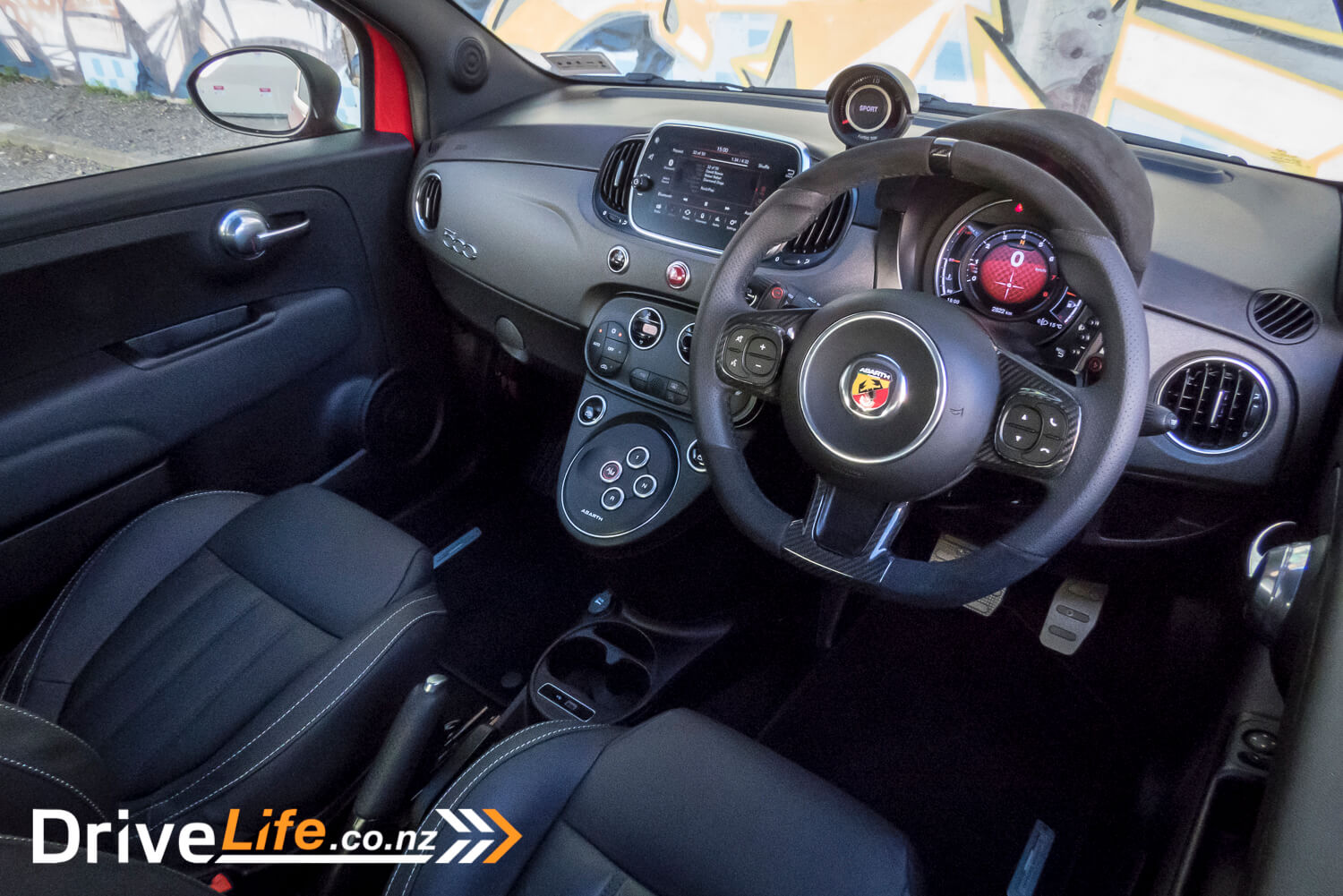
This is an old design; it’s been around for over a decade, and yet it doesn’t look that way. Distinguishing the 595 Competizione, the usually bright and glossy coloured dash is now finished in a deep silver metallic, while other interior plastics are finished in dark matte colours.
It’s all visually pleasing design wise, but many of the surfaces are hard plastic. Better to look at, than to touch.
In terms of overall material quality, the 595 is a mixed bag, but Abarth has invested in some high quality pieces for the 595’s interior.
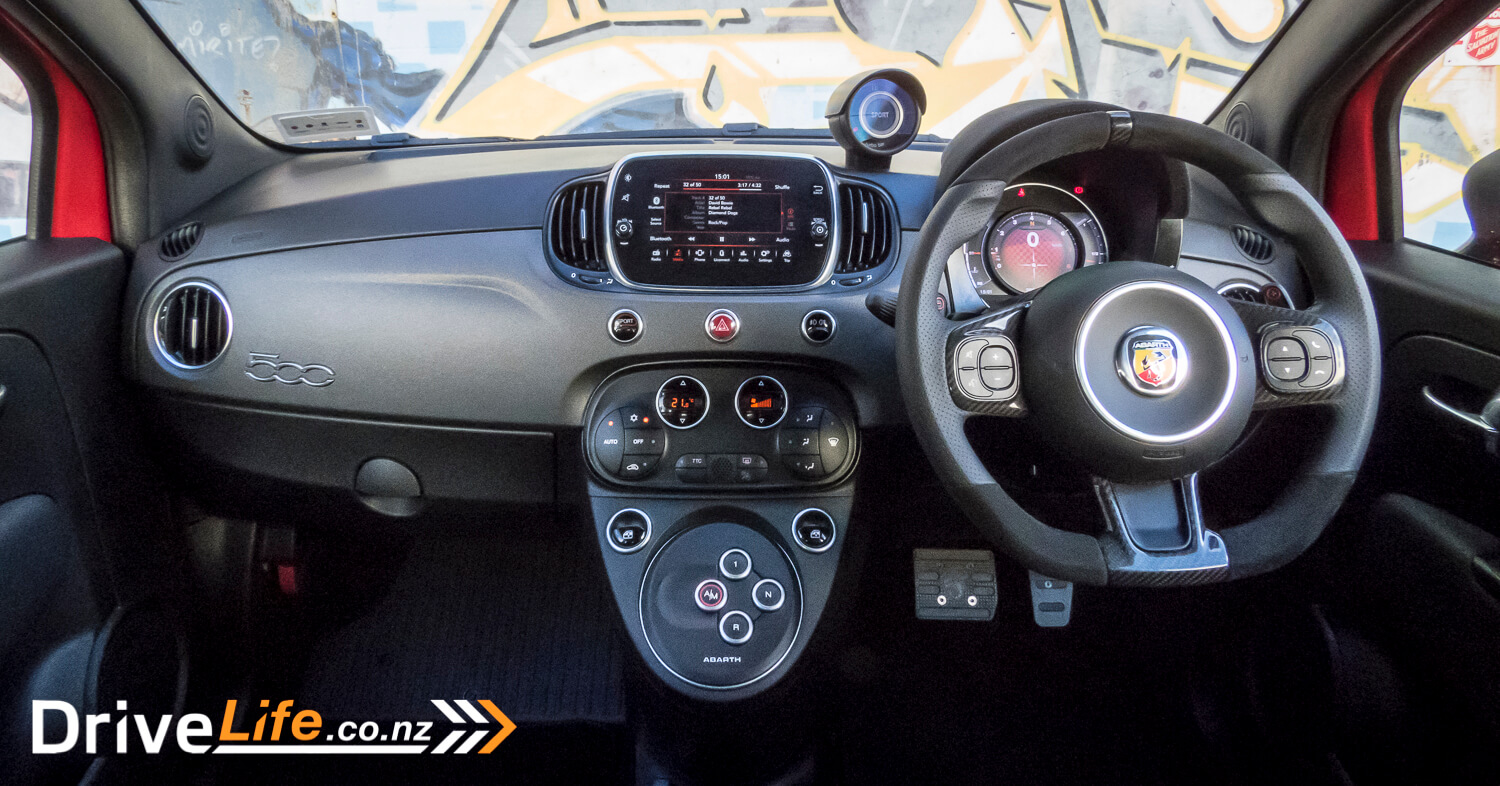
The steering wheel is wrapped with leather and alcantara, and has real carbon fibre finishes. This is a claim that few manufacturers make, even on cars with a significantly higher price tag. The steering wheel is also bang-on size wise and hasn’t been overcomplicated with buttons. A big tick from my perspective.
The metal shifter paddles feel sturdy and fall near perfectly hand behind the wheel. Below the steering wheel column are the alloy pedals, with the Abarth scorpion etched on the brake pedal. They look pretty damn cool.
Sitting proudly atop the dashboard is a boost gauge. Engage Sport mode and ‘Sport’ will light up squarely in the centre. Although a fun add-on, it’s not a real boost gauge because it doesn’t register negative pressure. But who actually cares? Anyone that tells you it’s not real isn’t cool anyway.

The worst bits? That’d be the doors. The door cards are finished with scratchy plastic, but Fiat has thrown in some equally cheap leather to line the armrest. My opinion is still mixed on those chrome door handles too.
On another matter, the doors are also surprisingly heavy, but they basically form the entire side of the car, so I suppose that’s not too surprising after all.
Continuing with the dash, the original 500 was never designed with an infotainment screen, yet Fiat has managed to perfectly integrate one into the latest models like it was original.
The Uconnect infotainment system has great resolution, albeit being basic in functionality. The main downside is that the system is quite laggy, particularly after having not interacted with it for some while.
The infotainment system is Apple Carplay and Android Auto compatible. There’s even a USB port at the bottom of the console to allow you to plug your phone in. Savvy!
However, there’s nowhere logical to securely store your smartphone in this old Fiat 500-derived interior. Not so savvy.
A noteworthy item that’s missing from the infotainment package is a reverse camera. You don’t actually need one on a car this small, but it’s surprising given that they’re beginning to mandate them internationally.
The best feature of the infotainment isn’t really a feature at all. Instead, it’s the start-up sequence. Turn on the key of 595, the screen will show a graphic of an Abarth emerging from a garage before displaying the Abarth logo. Turn off the 595, and the vehicle retreats back into the garage. It’s a small novelty, but one which makes you smile.
On the subject of cool graphics, the instrument cluster screen has two entirely different displays for the two driving modes. Normal mode shows all the practical stuff, like fuel economy and range. Sport mode sweeps that all aside, prioritising the tachometer, fuel and temperature gauges and adds-on the all-important g-meter.
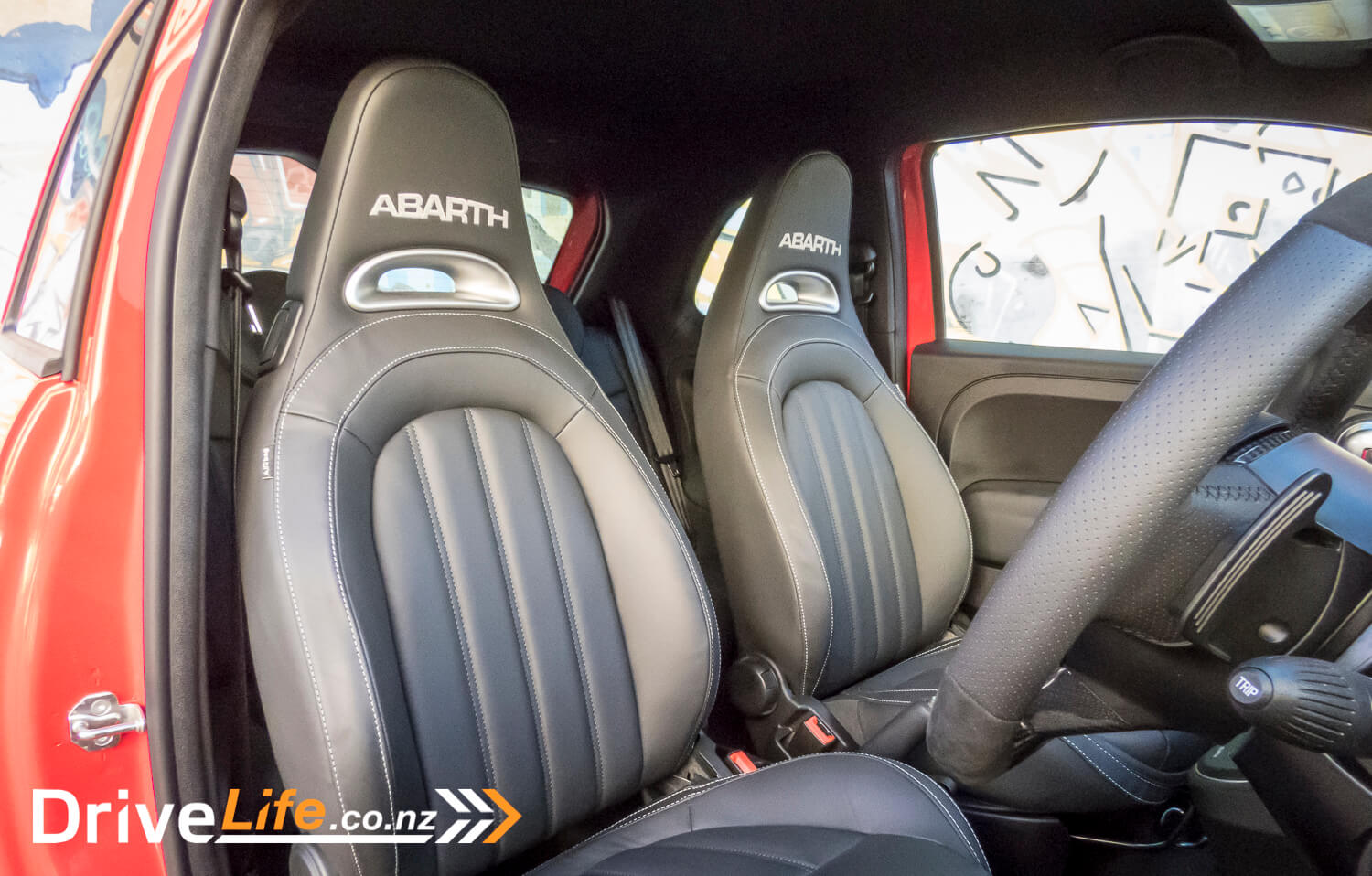
The front seats have a bucket-seat design, adorned with Abarth lettering on the headrest. They look sharp, though I suspect they haven’t been sized for our market.
If you’re anything like me, meaning your butt has been forged by contact sports and meat pies, you’ll virtually be sitting on the bolstering. Excusing that graphic metaphor, a better synopsis is that the seats fit small.
The seats are also quite firm and aren’t the most comfortable on longer journeys. They’re acceptable on short trips, but I found occasionally myself becoming uncomfortable doing my usual 26km commute.
Another odd ergonomic quality of the interior you’ll also notice is that the driver’s seating position is rather high up. Even climbing into the cabin of the 595 feels more like a step-up, as opposed to a sit-down sensation, which feels counterintuitive for a small car. The driving position does give you excellent outward visibility, which is great for a city run-round car.
However, there are some implications of this driving position upon the 595’s driving experience. More on this later.
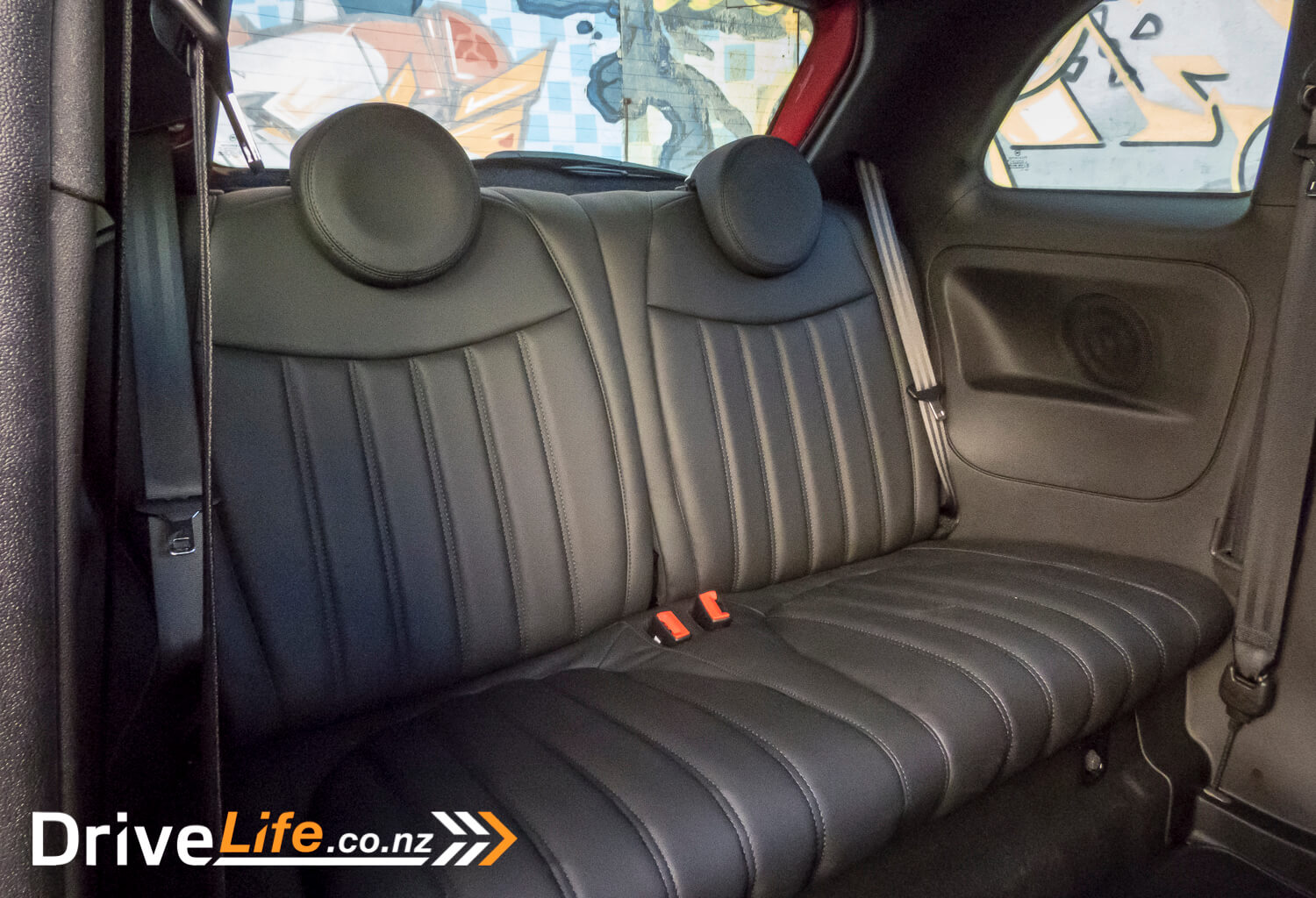
Then there are the rear seats, which will challenge the concept of what can be defined as seating. In other words, there’s virtually no leg-room for rear passengers. It’s essentially going to be a bench that’s exclusively reserved for your luggage, a small dog, or children with no legs.
Speaking of luggage, there’s actually some usable cargo space in the boot. Definitely enough space for a few Prada weekend bags. So that nobody sees your expensive Prada, there’s a parcel tray to cover over the boot. I draw attention to it because it’s the smallest parcel tray I’ve ever seen on a car. For me, it’s all just part of the humour of the Abarth.
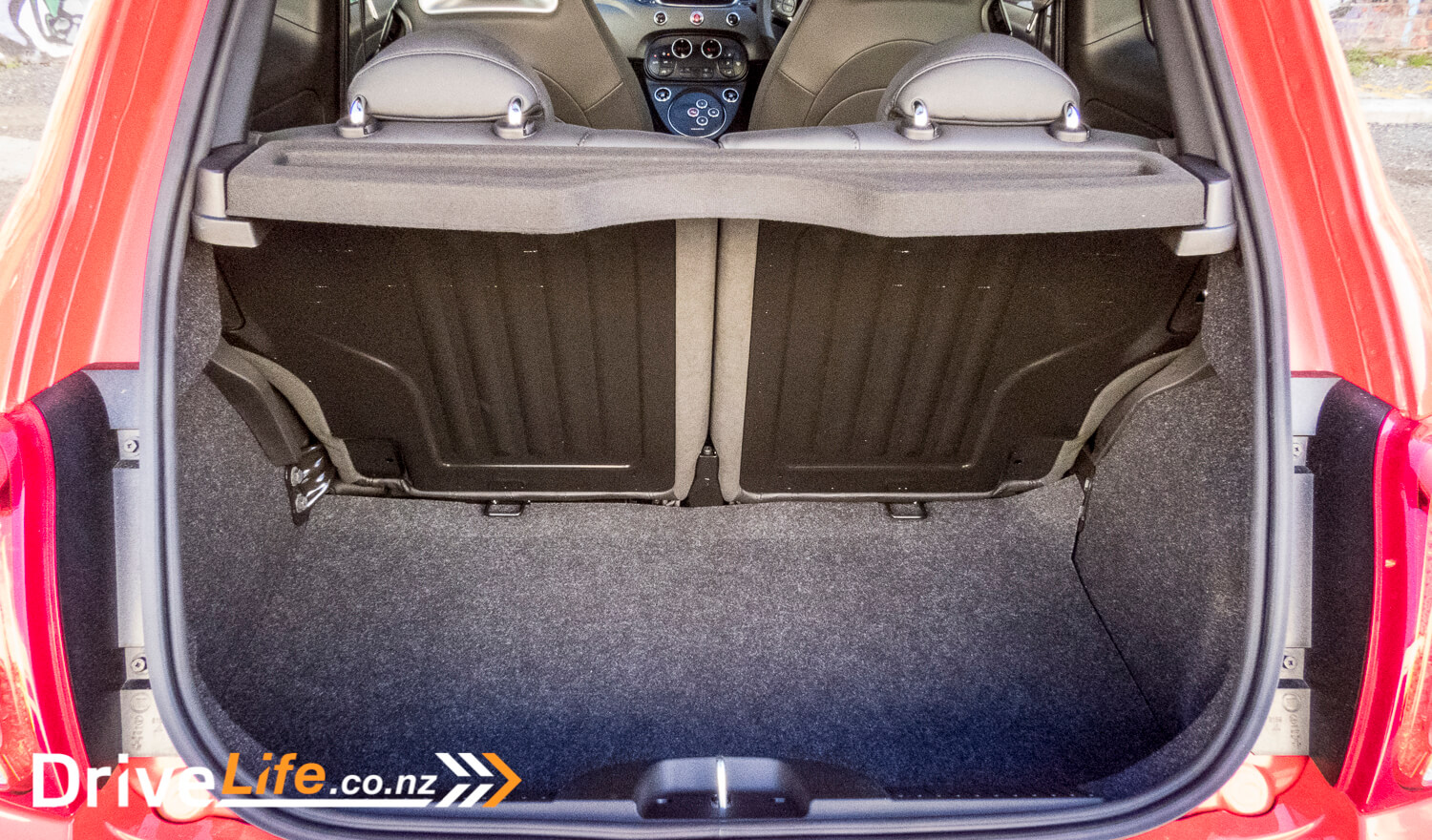
Despite some weird ergonomics, tight-fitting seats and some hard-plastic finishes, I rather liked the interior of the 595. The retro styling is still fresh in 2020, there’s high-quality pieces where it matters, plus the boost gauge and the start-up sequence on the infotainment are the cherry-on-top.
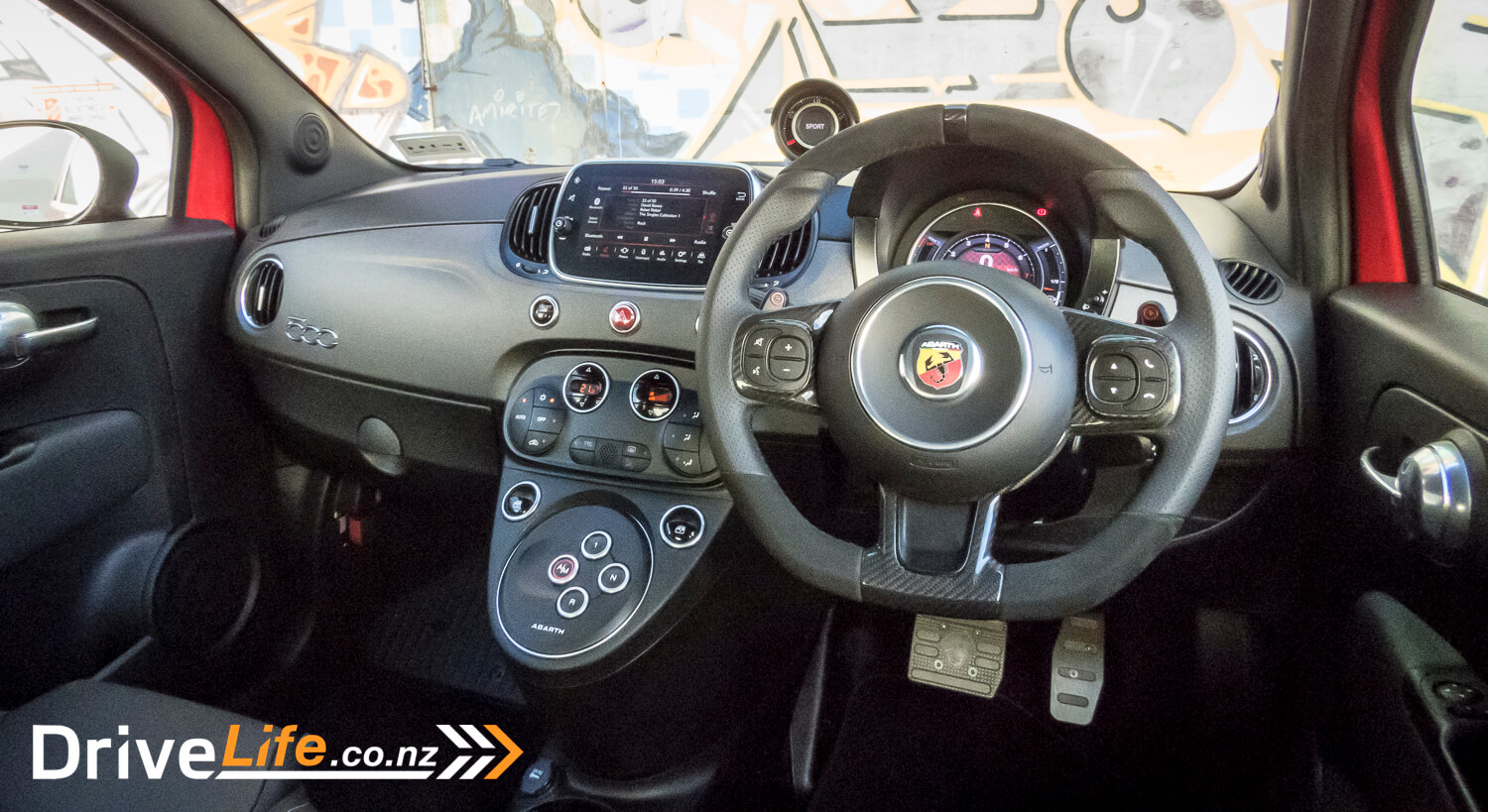
What Does The 2020 Abarth 595 Competizione Drive Like?
Before you’ve even climbed into the driver seat, the Abarth makes an electronic whine when you open the door. Was it the fuel pump? Nope. The key hasn’t even touched the ignition.
This noise is Fiat’s complicated gearbox priming itself. Interesting start.
Turn the key of the 595 and the 1.4 litre 4-cylinder turbo engine roars into life. The 595 Compeititzone’s engine produces 132kW of power and 250Nm of torque. On paper, this doesn’t sound too exciting, yet the 595 weighs only a fraction over a tonne at 1,045kg. This means that 0-100kph is dispensed in 6.7 seconds. Not bad.
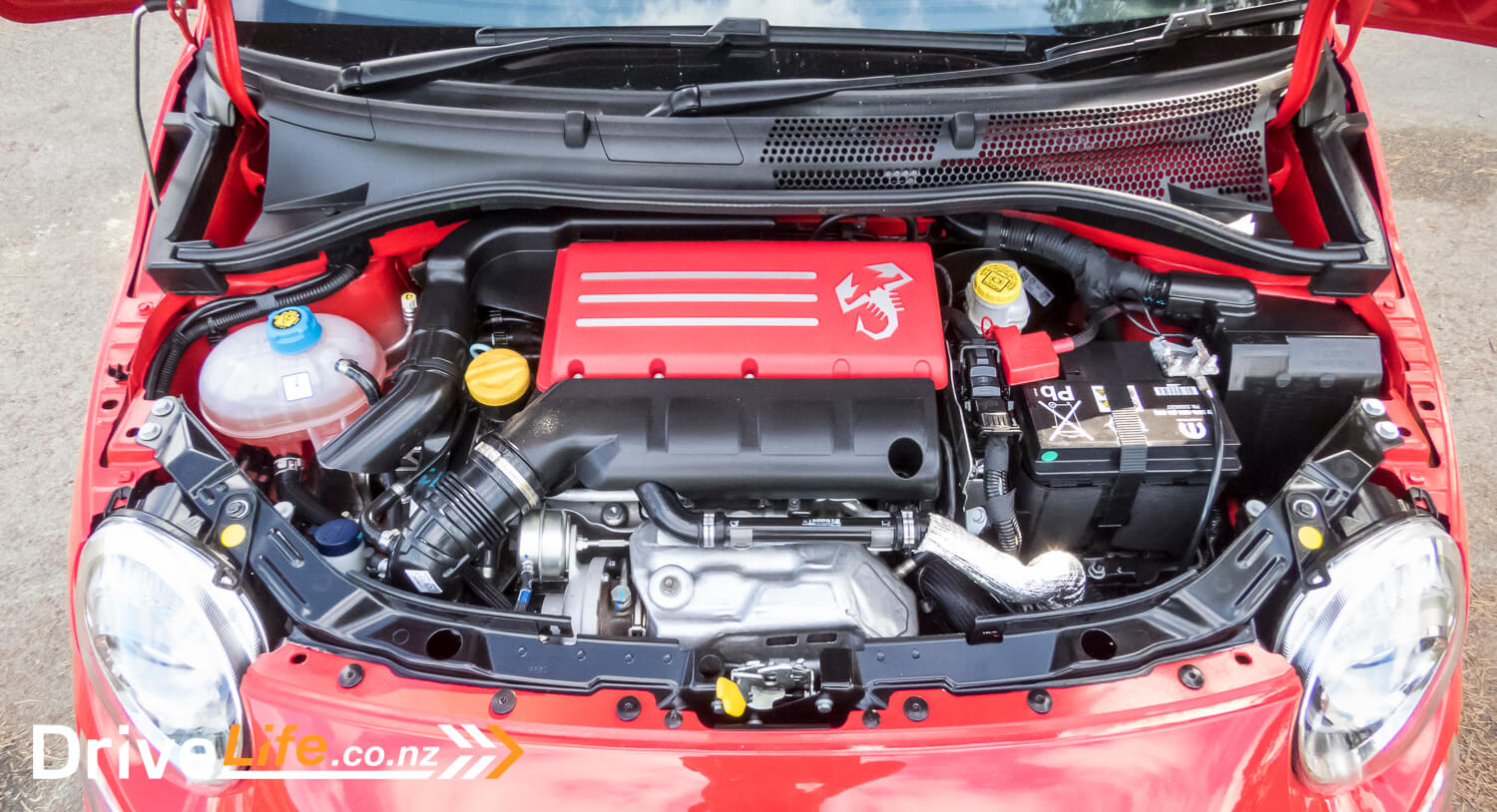
The best part is that the 595’s engine is paired with a Monza bi-modal exhaust. This allows the Abarth to produce an absolutely raucous engine note. Honestly, this engine and exhaust combination could put some V8’s to shame.
The power from the engine is delivered like an old turbocharged vehicle from the 1990s, meaning there’s some turbo lag, but once you’ve taken it up into the mid-range, the engine begins to surge. You’ll also hear small backfires on the downshift.
Ultimately, it’s those berserk noises coming out the back which defines the Abarth. I find it utterly hilarious that a small hatch even makes such a noise. The engineers that concocted this combo should be up for a Grammy nomination.
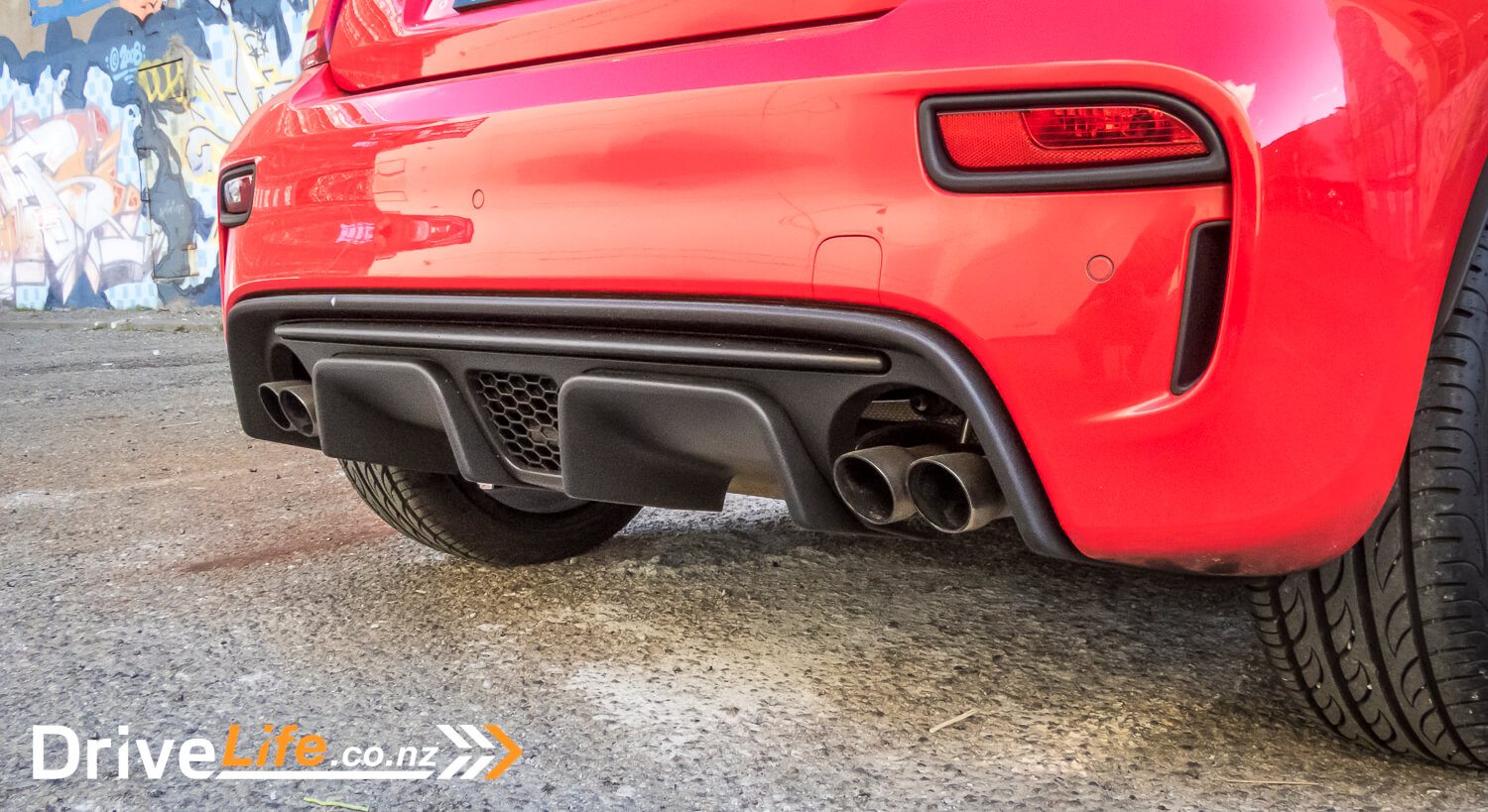
The Abarth also has a sport button, which I’d leave permanently engaged. Not because I am a hooligan-at-heart, but objectively, the Abarth is much better in sport mode.
When in normal mode, the steering is too light, and the angry exhaust noise is quietened, albeit only marginally.
On the subject of steering, the Abarth is equipped with Pirelli P-zero tyres and Koni shocks as standard. So how does the thing ride? It’s unsurprisingly firm, but not intolerably so.
Those Koni shocks have a dual flow setup, allowing the 595 to be more compliant on rougher roads. Which leads us onto handling, the Abarth’s comprehensive list of performance goodies would imply that it handles like it’s on rails.
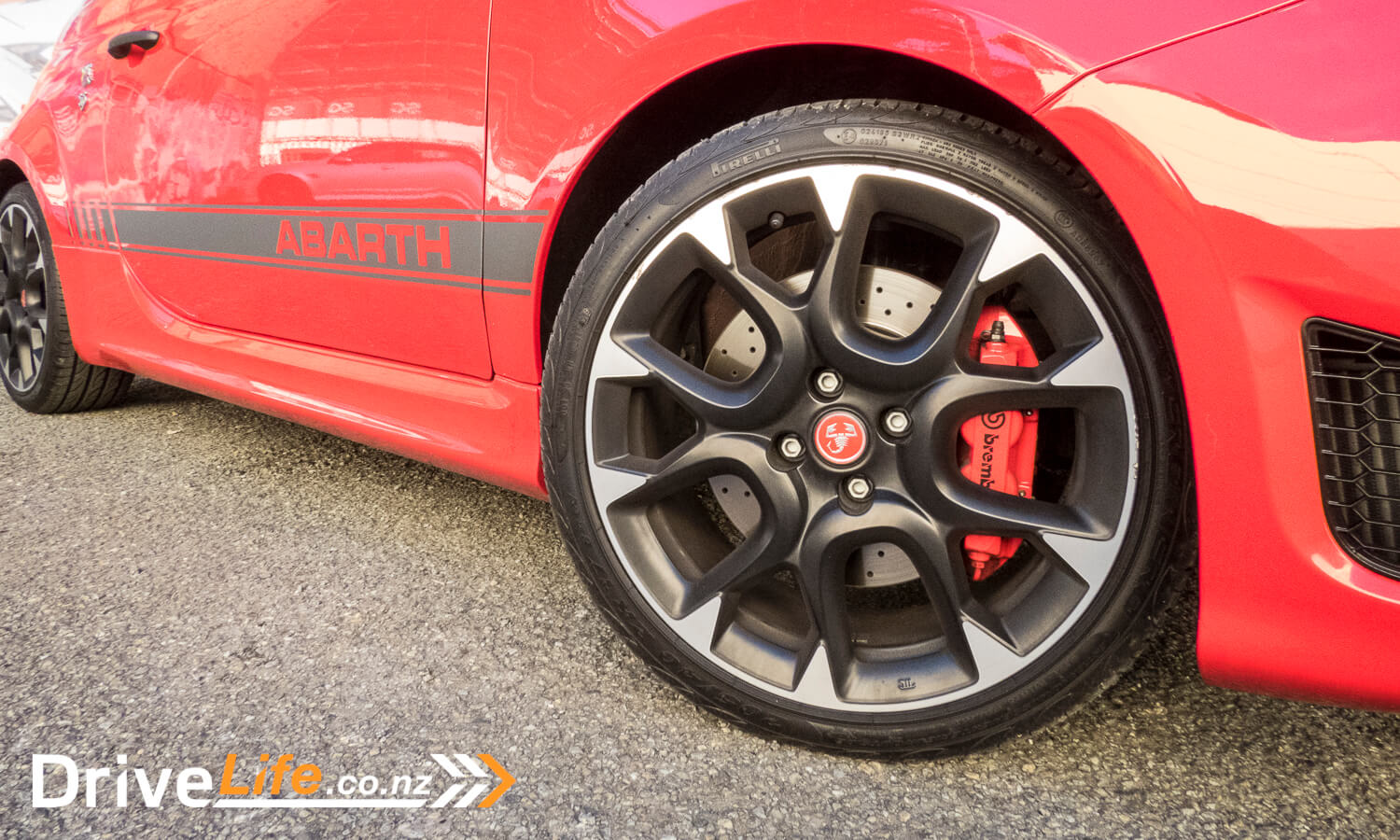
To give credit to Abarth, their engineers have done an excellent job of making the underlying Fiat 500 chassis perform the way the 595 does. For a small front wheel drive hatch, it’s pretty darn good. Yet, while the 595’s handling inspires some confidence, it’s not as great as I had initially expected.
The 595 doesn’t feel super precise through a corner, and there’s slight body roll when carrying speed through it. Above all, it’s the driving seating position which has the greatest impairment on the experience. Because of the high seating position and the body roll, taking a fast corner can occasionally give one the impression that you don’t have complete control of where the Abarth is going.
A friend of mine who enjoys a spirited ride on his high-powered motorcycle said he felt mildly frightened from the passengers seat going through some of the faster corners in the Abarth.
All this said, the front-end will stubbornly grip onto the road. I never managed to unstick the Abarth on spirited drives and I doubt many could on public roads. Trust the 595, and it won’t let you down.
Alternatively, adopt the mantra of ‘Get in, and hold-on’. Good thing you’ve got those Brembo brakes.

My experience with the Abarth would have also been better with a manual transmission. Our test vehicle came with Fiat’s Duologic single clutch, robotised automated-manual. Pardon me?
Fiat’s claim is that it’s an automatic gearbox that’s programmed to shift like a manual transmission. So, the best of both worlds?
The reality is the polar opposite. You end with an automatic transmission that shifts gears like a 16-year old learning to drive manual. Put any sort of power through it, and the gear change is shockingly harsh.
Of course, you can just put the car into manual mode and change gears using the paddles. Even then, the shifting jerkiness isn’t fully fixed. I later discovered that the gearbox had a smoother shift if you lift off the accelerator prior to shifting. So, why even get the auto?
Here’s quick rundown of how to use the thing;
1 – This is for first gear, or Drive.
A/M – Select automatic or manual mode(s).
R – Reverse. Not for race – sadly.
N – Neutral.
In reality, it’s pretty simple to operate. Start the car, press 1 and off you go. If you’ve left it in a particular drive mode, it’ll stay there. Also, because of how the Duologic works, the clutch doesn’t engage until you begin to apply power. When I collected the vehicle, I recall the suggestion of leaving the Abarth in gear when parked on a hill.
To sum-up the absurdity of it all, this is an automatic transmission that you need to hill-start.

In fairness to Fiat, I like that they’ve tried to offer an interesting transmission for those that absolutely need to have an automatic. They could have opted for a totally flaccid gearbox, which wouldn’t suit the lunacy of the Abarth. But save yourself the trouble and the cash, and simply buy the manual.
Seeing that Fiat tried this gearbox, presumably the rest of the car cutting edge? Nope. In fact, the Abarth is suitably analogue.
The 595 is largely devoid of 2020’s latest safety tech. There’s no radar cruise, no blind spot monitoring, no lane keep assist, nor forward collision warning, or anything. Do I care? Not even slightly.
The 595 isn’t for racking up open road miles, so who cares about adaptive cruise. Also, when you turn around towards the blind spot, the rear of the car is right there. You’d need to be doing something properly stupid to whack the rear of this thing into anything.
Seriously, it’s difficult to comprehend how small the Abarth is until you’re driving it. I was able to turn the 595 around in my mate’s single car driveway, which is another novelty of the whole experience.
During our time with Abarth, we achieved a combined fuel economy figure of 7.2L/100kms, which is a bit above the claimed 6L/100kms. However, expect this figure to be totally blown-out if you drive it like you’re meant to. I saw the gauge tick up into the high 9L mark after some spirited driving.
What’s The Competition For The 2020 Abarth 595 Competizione?
There are few cars which can rival the uniqueness of the Abarth. In that respect, it nearly stands alone. Here are some of the closest segment competitors. The Abarth is the only 3-door on this list.
| Brand/Model | Engine | Power/Torque kW/Nm | Cargo capacity, litres | 0-100km/h | Fuel L/100km | Price |
| Hyundai i30 N-Line (automatic) | 1.6-litre, 4-cylinder, turbo-petrol | 150/265 | 395 | 7.2 | 7.5 | $43,990 |
| Abarth 595 Competizione | 1.4-litre, 4-cylinder, turbo-petrol | 132/250 | – | 6.7 | 6.0 | $42,490 |
| Volkswagen Polo GTI (DSG) | 2.0-litre, 4-cylinder, turbo-petrol | 147/320 | 351 | 6.7 | 4.7 | $39,990 |
| Ford Fiesta ST | 1.5-litre, 3-cylinder, turbo-petrol | 147/290 | 311 | 6.5 | 6.3 | $35,490 |
What’s The Pros And Cons For The 2020 Abarth 595 Competizione?
Pros
Outlandish looks
Undated design
Abarth novelties and street-cred
Angry engine note
Premium steering wheel
Terrifying
Cons
Silly gearbox
Interior quality
Poor driving position
Narrow and hard seats
Rear seat space
Lack of safety equipment
Terrifying
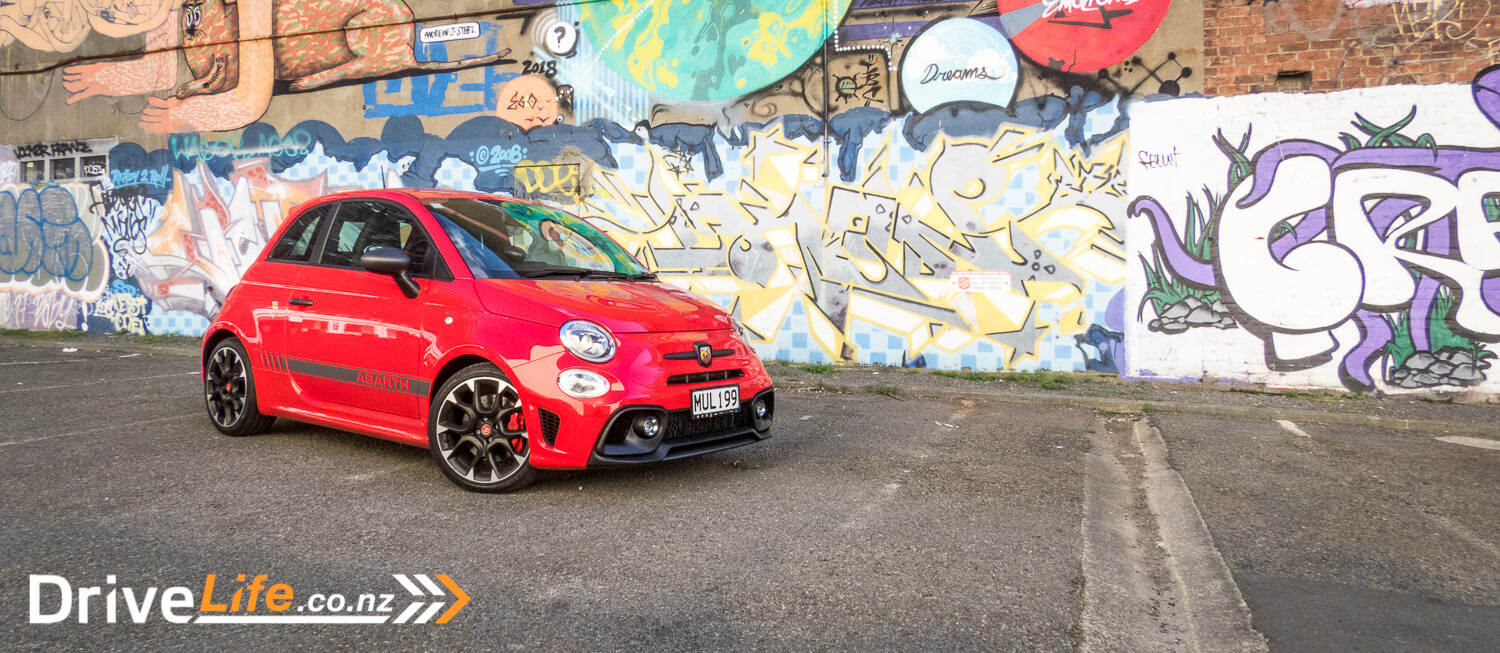
2020 Abarth 595 Competizione – Specifications
| Vehicle Type | 3-door performance hatchback |
| Starting Price | $42,490 |
| Price as Tested | $42,490 |
| Engine | 1.4-litre 4-cylinder turbocharged petrol engine |
| Power, Torque (kW/Nm) | 132/250 |
| Transmission | Duologic – Single clutch, robotised automated manual (Semi-automatic transmission) |
| Spare Wheel | Pump only |
| Kerb Weight, Kg | 1,085 |
| Length x Width x Height (mm) | 3657 x 1627 x 1485 |
| Cargo Capacity, litres | N/A |
| Fuel tank Capacity, litres | 35 |
| Fuel Economy, L/100km | Advertised Spec – 6.0 (Combined) Real World Test – 7.2 |
| Towing Capacity Kg, unbraked/braked | N/A |
| Turning circle, metres | N/A Small: 6-10m / Medium 10-12m / Large 12m+ |
| Warranty | 3 year / 150,000 km |
| ANCAP Safety Ratings | N/A |


